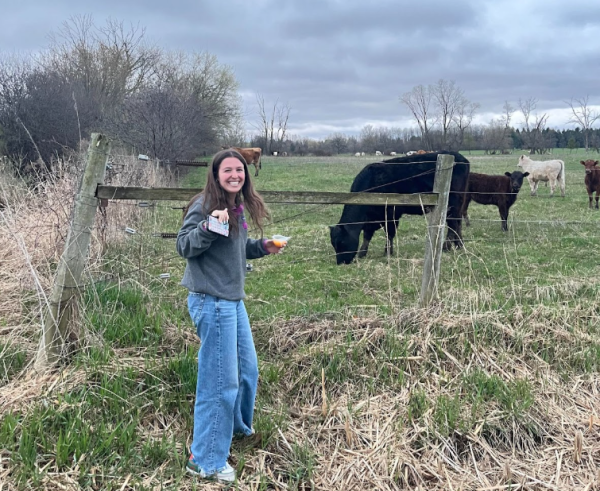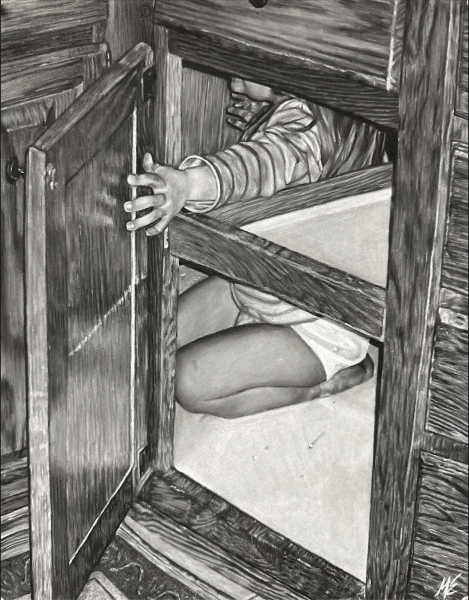Dark Days: The realities of Seasonal Affective Disorder

Seasonal Affective Disorder is a form of depression.
As the winter season approaches, many people associate the chill in the air and swiftly falling snowflakes with seasonal celebrations, school breaks and warm holiday nights spent indoors with family and friends. For others, however, this shift in temperatures and lack of sunlight during long winter nights can also lead to the beginning of a long, internal battle.
Seasonal Affective Disorder (SAD) is characterized by feeling general depressive symptoms that begin with the shift in seasons from the warmer, lighter months to the colder ones. Certain factors may make some more at risk than others of having this condition, and a change in serotonin and melatonin levels, as well as shifts in people’s internal clock are largely a result of the changing temperatures and sunlight that are characteristic of the season.
“[SAD] is a type of depression that people further from the equator experience…when seasons change and when you have fewer daylight hours. People who are already predisposed to depression and bipolar are groups that are oftentimes more severely impacted,” Benjamin Sloma, AP Psychology teacher, said. “Spending fewer hours active and more time “hibernating,” a general increase in weight gain that results from the body feeling the need to put on another layer of insulin, along with prior symptoms of depression… can lead to a variety of social-emotional consequences.”
Symptoms of SAD include feelings of anxiety and loneliness, shifts in appetite, weight gain and social withdrawal and isolation.
“I noticed [symptoms of SAD] at the beginning of one winter. I was just especially down and depressed for longer periods of time than I had been before. I also really hated the cold weather and only felt comfortable and happy when I was warm and typically alone in bed because it was a lot easier and comfortable than getting up and going out,” Savannah Wright, sophomore, said. “I also found myself thinking about summer and warm weather a lot more than usual and longing for it.”
However, it is important that people who may have SAD be able to distinguish general feelings of exhaustion from sports activities or a busy school day that may result in certain levels of fatigue from actual depressive symptoms. SAD is characterized by near-constant feelings of sheer energy loss that occur with the same consistency with or without rest.
“[SAD] is sustained. It’s like feeling like ‘I’m always tired’ or ‘I’m always feeling depressed and hopeless’,” Sloma said. “Everybody has a bad day or a few bad days, but when it’s sustained over long periods of time, that may be cause for concern.”
A variety of therapies and treatment options, such as medications including anti-depressants or cognitive-behavioral and light therapies, can be used and/or prescribed by a therapist or other specialist.
“Talk to your therapist before the short days and bitter cold send you into a downward spiral. Come up with a prevention plan (in addition to a treatment plan) to keep your SAD at bay,” Jessica Koblenz, licensed psychologist, said.
Any student who feels as though they might be experiencing symptoms of SAD are encouraged to discuss it with a family member, doctor, school psychologist or other trusted adult. The impacts of SAD can be severe as a person attempts to carry out his or her day-to-day activities, and it is important for those who possess it to feel empowered to take action on behalf of their mental health.
“Yes. I lack the motivation that’s necessary to be successful in school during the winter mainly and it does heavily affect my grades which snowball and affects how I feel about myself and the cycle goes on,” Wright said. “Things could be a lot easier for those suffering with SAD if they just got the motivation to get help, which is the main struggle, but people and especially students shouldn’t have to struggle for months on end with something that can be helped.”

Alexandra Grosso is a junior at Homestead who was been writing for the Highlander Online for the past three years. She is best known for her articles on...




